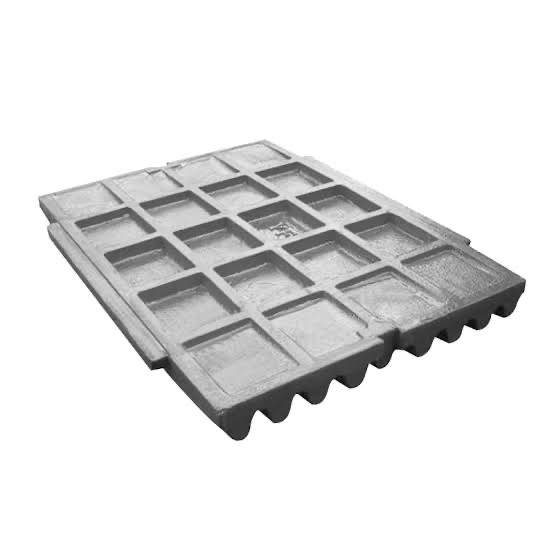Manganese steel casting involves creating intricate metal components using an alloy that contains a high proportion of manganese. This alloy’s exceptional toughness, hardness, and work-hardening properties make it ideal for producing wear-resistant parts like crusher jaws, railroad components, and construction machinery. The casting process allows for the precise formation of complex shapes while maintaining the steel’s durability and abrasion resistance.
Sir Robert Hadfield’s High Manganese Steel contains essentially 1.2% Carbon and 12.5% Manganese and attains it unique characteristic properties only after correct heat treatment. These were the basic principles after years of development that were first published in 1887. Where several varieties of the alloy have been developed, most of the produced tonnage is close to Hadfield’s original composition.
Manganese steel is a low strength but tough and ductile cast steel. Its predominant feature is the ability to work harden from an initial hardness of 240BHN to well over 500 BHN. As the material increases in hardness, the abrasion resistance as well increases. Compared to carbon steel castings, this derived capability proves worthy of some of the most demanding product applications.
Manganese Casting Parts/Classifications
Used most commonly in the mining industry, you’ll find manganese steel in rock crushers, crawler treads, dredge and shovel buckets, and mill liners. Hammers and grates for metal recycling and other high-impact environments such as inside a shot peening machine, all utilize austenitic manganese steel. When used in crushing applications (mining, recycling, etc.), it is the only material that will withstand the harsh, abusive environments. Other applications include window bars in prisons, safes, and bullet-proof cabinets.
Manganese steel castings are also commonly used in the rail industry for switches and crossings. Railway switches on the tracks are under tremendous impact and, when a train wheel hits the surface of the rail, the manganese rail is slightly deformed. This impact and deformation will cause the surface to harden, and the toughened surface will resist future wear.
